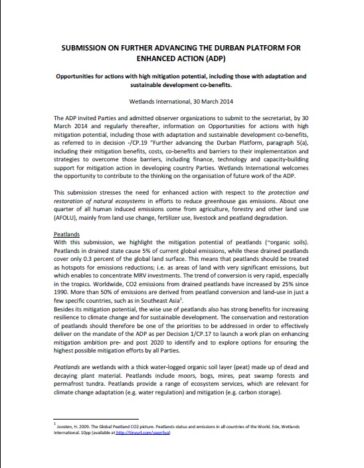
Submission on mitigation potential of peatlands to the UNFCCC
-
Climate mitigation and adaptation
-
Peatland conservation and restoration
About one quarter of all human induced greenhouse gas emissions come from agriculture, forestry and other land use, mainly from land use change, fertilizer use, livestock and peatland degradation. This submission to the UN Framework for Climate Change (UNFCCC) discusses the mitigation potential through the conservation and restoration of peatlands and calls for addressing peatlands as a priority in the world’s pre- and post 2020 ambitions to reduce greenhouse gas emissions.
Description
Peatlands in drained state cause 5% of current global CO2 emissions, while these drained peatlands cover only 0.3 percent of the global land surface. This means that peatlands should be treated as hotspots for emissions reductions; i.e. as areas of land with very significant emissions, but which enables to concentrate MRV investments.
The trend of conversion is very rapid, especially in the tropics. Worldwide, CO2 emissions from drained peatlands have increased by 25% since 1990. More than 50% of emissions are derived from peatland conversion and land-use in just a few specific countries, such as in Southeast Asia. Besides its mitigation potential, the wise use of peatlands also has strong benefits for increasing resilience to climate change and for sustainable development.

